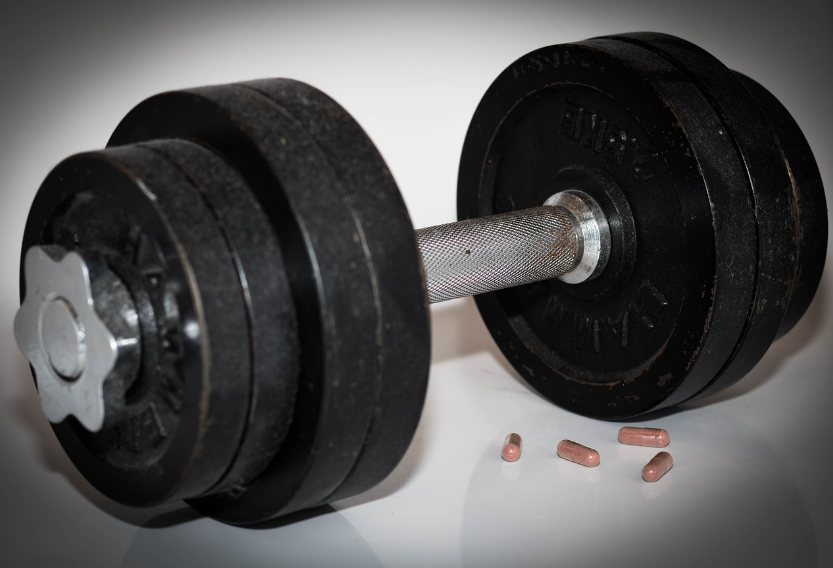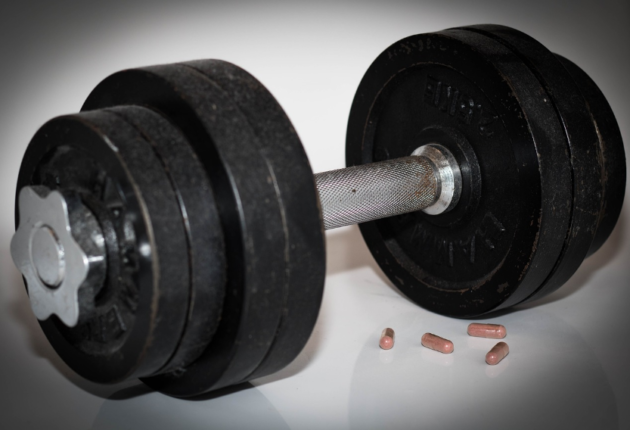
Creatine stands among the most researched and effective sports supplements available today. This naturally occurring compound found in vertebrates delivers noticeable boosts in strength, muscle gains, workout capacity, and recovery. Creativity can push fitness to exciting new levels when taken correctly alongside training.
This definitive guide will cover how creatine works within the body, its fitness and performance benefits, the most effective supplement forms, dosing considerations, safety factors, and choosing quality products wisely to unleash your inner beast!
Table of Contents
What is Creatine?
Creatine is an amino acid-derived compound produced naturally within the human body to facilitate quick energy delivery primarily to muscle tissues. Here’s a quick summary of its synthesis and role:
- Creatine Synthesis: Over 95% originates via the liver, kidneys, and pancreas, combining the amino acids arginine, glycine, and methionine. The remaining 5% comes from food intake.
- Creatine Transport: After circulating through the bloodstream, creatine enters muscle tissues via CreaT1 transporters assisting absorption.
- Creatine Phosphate Formation: Once inside muscle cells, it binds rapidly with phosphate, becoming phosphocreatine or ‘creatine phosphate.’
- ATP Replenishment: These high-energy phosphocreatine molecules can then donate phosphate groups to replenish ATP supplies during intense activity, avoiding early fatigue.
In essence, stored creatine provides muscles with quick access to recycled energy, boosting power output, endurance, and recovery capacity during challenging training and sporting activities.
While your body produces roughly 2 grams of creatine per day – and consumes another 1-2g from meat/fish intake – supplemental forms significantly increase concentrations within muscles to enhance athletic performance beyond baseline genetics.
Benefits of Creatine Supplementation
Over 500 research studies demonstrate creatine’s unique performance enhancement and physique-amplifying effects:
- Increased Strength and Power: Supplementing creatine improves 1 rep max lifts, generating greater power output during explosive movements like sprints or vertical jumps.
- Improved Muscle Mass: Heightened strength capacity signals bigger muscle-building stimuli under heavy workloads, leading to accelerated hypertrophy and size gains over 3-6 weeks.
- Enhanced Training Volume and Intensity: Delaying fatigue thresholds results in higher total session workload completion before exhaustion. You push harder and longer.
- Reduced Muscle Fatigue: The extra phosphate-bonded energy creatine delivers reduces lactate buildup and fatigue metabolites, slowing down the decrease in contractile strength during sets.
- Improved Recovery: Boosted muscle cell energy turnover also speeds ATP-CP system recovery between workouts, allowing better progress consistency and injury avoidance via built-in breaks.
- Cognitive Function: Emerging evidence shows that creatine improves short-term memory, intelligence test scores, and cognition benchmarks by likely supporting brain energy metabolism demands.
Supplemental creatine gives your muscles and mind an extra push – making you stronger, bigger, and smarter.
Different Forms of Creatine Supplements
While creatine monohydrate remains the gold standard, product innovation continues:
- Creatine Monohydrate: This classic budget form boasts vast efficacy data supporting muscle creatine loading and performance enhancement. Some users report mild initial stomach discomfort.
- Creatine Hydrochloride (Creatine HCL): Enhanced solubility improves absorption with low doses. However, limited long-term trials exist, and costs run higher.
- Buffered Creatine: Buffering agents raise monohydrate solubility for easier digestion. Effects remain identical once absorbed.
- Liquid Creatine: Flavored unstable concentrates allow dosing convenience without powder handling but degrade over weeks.
- Creatine Ethyl Ester (CEE): While touting improved bioavailability, studies show most CEE breaks down before reaching muscles rendering effects useless. Stick to monohydrate.
- Kre-Alkalyn: This patented ‘buffered creatine’ claims superior pH handling. But both forms convert to creatine in stomach acid, negating benefits while costing more.
- Creatine Magnesium Chelate: Chemically bonding creatine to magnesium aims for smoother absorption but lacks evidence of outperforming standard monohydrate in muscle creatine loading effectiveness.
- Creatine Blends: Many products combine basic creatine with other erogenic supplements like Beta-Alanine or BCAAs under proprietary formulas. These prove costlier for no added benefit. Stick to solo forms.
Safety Considerations
When used responsibly within established safety guidelines, creatine poses very few health risks statistically, beyond some notable exceptions:
- Muscle Cramps – Minor cramping initially occurs for roughly 5% of users as altered fluid dynamics provoke tightness. Proper hydration minimizing dosage quickly relieves discomfort.
- Water Retention – Increased fluid uptake into muscle tissues may temporarily raise body mass measurements. This evens out over weeks as the muscular compartment expands more dynamically.
- Kidney Issues – Pre-existing renal conditions like kidney disease might experience complications filtering higher content though data remains speculative. Cessation reverses course. Otherwise healthy individuals show zero kidney function declines.
For healthy persons, creatine proves safe, affords neuroprotective effects against concussive or spinal injuries, counters wasting during immobilization, and improves numerous biomarkers and aging considerations. Consult a doctor before consuming over 5 grams daily in the long term, however.
Choosing the Right Creatine Supplement
Selecting a quality creatine supplement ensures maximum benefit:
- Form – Stick to creatine monohydrate powder from reputable brands with proven clinical efficacies. Other forms lack sufficient evidence or practical advantage.
- Brand Reputation—Esteemed supplement companies like Optimum Nutrition and MuscleTech reliably deliver highly pure formulations ideal for direct dissolution and absorption.
- Dosage – Consume 3-5 grams daily, cycling monthly. Look for products clearly displaying lab-verified content per serving guaranteeing accurate dosing.
- Additional Ingredients – Avoid fanciful blends with unnecessary additives. Some basic flavoring suits taste preferences, but go easy on additional ergogenics lacking evidentiary justification. Stick to solo creatine primarily.
Safety Precautions
- Consult a healthcare professional before supplementing with existing health complications or medications that may interact.
- Individuals with current kidney or liver disease should avoid creatine supplementation without medical guidance.
- Creatine is also not recommended for anyone under 18 years old while still growing.
When sourced prudently and paired with consistent resistance training, evidence and expert opinion overwhelmingly support the use of supplemental creatine to improve strength, muscle gains, endurance, and neurological performance.
Conclusion
Through increased availability of cellular energy, creatine supplementation gives muscles extra contractile capacity to lift more weight, sustain longer session volumes and recover quicker between workouts – spurring profound size and strength gains unachievable naturally.
Different forms exist, but creatine monohydrate reigns supreme, with thousands of efficacy studies demonstrating amplified power output, accelerated muscle protein synthesis, enhanced total workload capacity per session, and increased lower body force production critical for explosive movements.
When responsibly supplemented under medical guidance if necessary, creatine provides unmatched performance enhancement effects and physique changes for weightlifting, team sports, and high-intensity athletics. Shop reputably from brands you trust and enjoy the rapid results firsthand.
Your inner beast awaits – feed it the proven fuel of creatine today and start performing at a new level!
